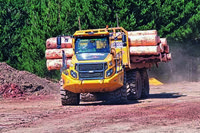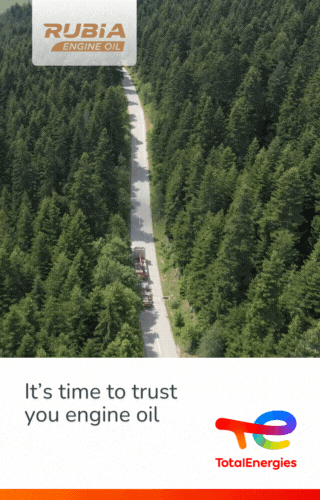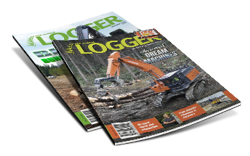 Ten percent of all logging operations in New Zealand now involve some form of two staging. This has prompted Forest Growers Research (FGR) and the University of Canterbury to partner in exploring the benefits and challenges of two-stage trucking, offering insights into its viability as an approach that could prove useful in promoting more sustainable logging.
Ten percent of all logging operations in New Zealand now involve some form of two staging. This has prompted Forest Growers Research (FGR) and the University of Canterbury to partner in exploring the benefits and challenges of two-stage trucking, offering insights into its viability as an approach that could prove useful in promoting more sustainable logging.
What is two-stage trucking?
Two-stage trucking refers to a harvesting system that uses an intermediary step between the primary extraction of logs and their transport. This intermediary phase often involves transporting modified stems or logs from smaller, remote landings to centralised processing and/or storage skids across roads that are steeper and constructed to a lesser standard. While the additional step adds complexity, it can unlock significant benefits in specific contexts, especially those characterised by steep slopes and limited access.
The case for two-staging
Research by both the University of Canterbury and Scion highlights multiple advantages of two-stage trucking:
Reduced infrastructure costs: By enabling smaller landings and shorter, lower-standard roads, two-stage trucking can minimise the cost of road construction and maintenance. For example, one researcher demonstrated a 27% reduction in roading length and a 47% decrease in skid area requirements.
Environmental benefits: Smaller landings and fewer roads translate to reduced environmental impact. Two-stage systems can mitigate erosion risks and avoid encroachment on sensitive areas, such as riparian zones.
Operational flexibility: Intermediate trucks provide the ability to process logs at centralised skids, optimising sorting and loading. This separation can boost productivity and allow for a broader range of log grades, potentially increasing profitability.
Enhanced safety: By separating extraction and loading activities, two-stage trucking lowers the risk of accidents associated with congestion and improves overall operational safety.
Examining real-world applications
The FGR/University of Canterbury research project has now completed three case studies that examined two-stage systems using modified six-wheel drive (6WD) dump trucks. These trucks demonstrated versatility and effectiveness in diverse settings.
Case Study 1: Denckers Block, Nelson
Set up: This operation, run by Bryant Logging, used a Bell 30E articulated truck modified to transport logs across the deck and carry binwood and slash using attachable bin sides (pictured here). This was transporting logs 430 meters from a small processing landing to a central storage skid. The haul track had a maximum loaded grade of - 17%.
Productivity: The operation achieved 42 tonnes per productive machine hour (PMH) for sawlogs with utilisation of 73%.
Key insight: Using the truck increased the area that could be harvested using ground-based machinery. That made the operation cheaper, and it was easier to keep the boundary riparian area free of slash while reducing damage to an adjacent area of ecological significance. The truck’s modifications, including hydraulic legs for easy unloading and the bin sides increased its utilisation, particularly as the skidder’s haul distance was out to 320 metres.
Case Study 2: Corbett Family Woodlots, Kerikeri
Set up: Contractor, Wise on Wood used a Hydrema 922G to transport logs over a 350 meter intermediate track that had a maximum grade of 11%...






